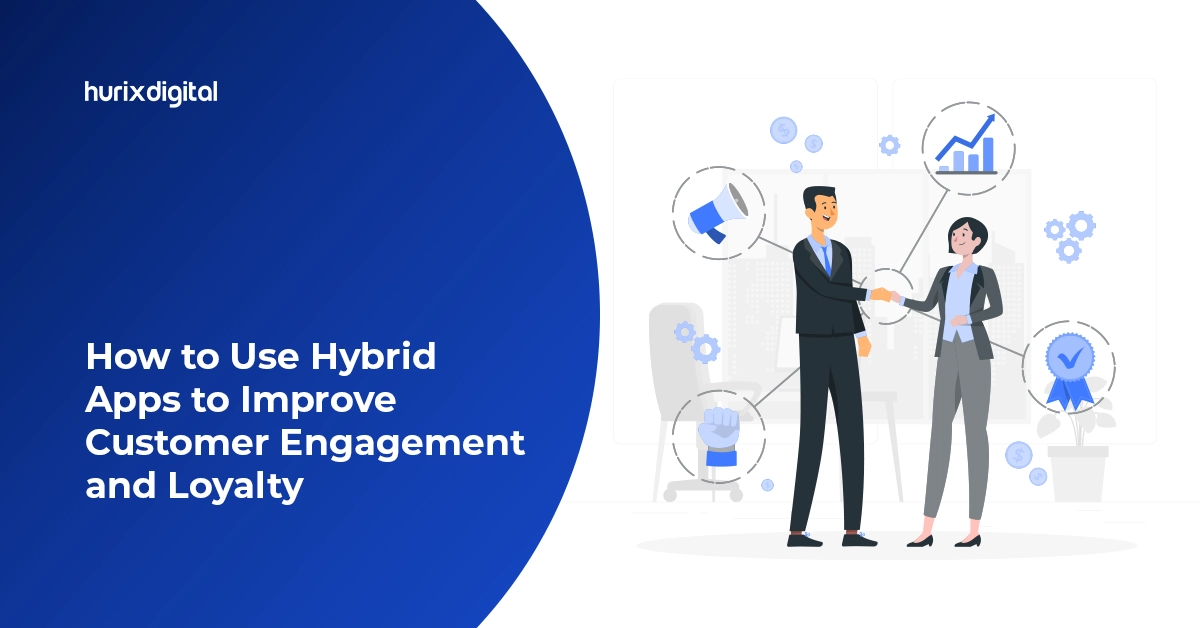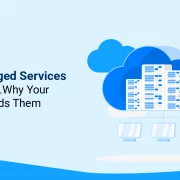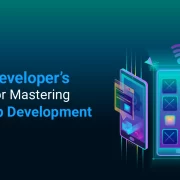
How to Use Hybrid Apps to Improve Customer Engagement and Loyalty?
Summary
Learn how hybrid apps can be used to enhance customer engagement and loyalty through a seamless and engaging user experience.
Did you know that the landscape of mobile application development has witnessed a remarkable shift? In 2021, over 42% of mobile developers embraced hybrid app development frameworks, signifying a substantial surge from previous years.
This statistic is more than just a number; it’s a testament to the growing recognition of the potential held by hybrid apps in reshaping how businesses interact with their audience.
This blog aims to discover how businesses can utilize hybrid apps not just to meet but exceed customer expectations, creating lasting connections that stand the test of time.
Table of Contents:
- What Is the Hybrid App Approach?
- What Are the Top Features of a Hybrid App?
- Using Hybrid Apps to Improve Customer Engagement and Loyalty
- Conclusion
What Is the Hybrid App Approach?
The term “Hybrid App approach” typically refers to a type of mobile application development that combines elements of both web and native apps.
Hybrid apps are essentially web applications (or web pages) built using web technologies (such as HTML, CSS, and JavaScript) and are hosted inside a native container. This native container provides access to native platform features and allows the app to be distributed through app stores.
Hybrid app use cases span a wide range of industries, from e-commerce and healthcare to education and finance. The key elements of a hybrid app are as follows:
- Web Technologies: Hybrid apps are developed using standard web technologies, including HTML, CSS, and JavaScript. This makes it easier for developers with web development skills to create mobile applications.
- Native Container: The web content of the application is encapsulated within a native app container. This container is essentially a WebView, a component that renders web content within a native app.
- Frameworks and Tools: Frameworks such as Flutter and React Native are available for building hybrid apps. These tools facilitate the development process by providing pre-built components, access to native APIs, and the ability to deploy on multiple platforms.
What Are the Top Features of a Hybrid App?
Hybrid apps share characteristics of both native and web applications, combining the strengths of both approaches. Here are the top three hybrid app features you can’t miss:
1. Cross-Platform Compatibility
One of the primary hybrid app benefits is the ability to write code once and deploy it across multiple platforms.
This allows developers to use a single codebase for both iOS and Android, saving time and effort compared to developing separate native applications for each platform.
2. Access to Native Device Features
Hybrid apps can access native device features using plugins or APIs. This means developers can integrate functionalities such as camera access, geolocation, contacts, and device sensors into their hybrid applications.
This access to native capabilities allows developers to create feature-rich applications that feel native to users.
3. Cost-Effectiveness and Faster Development
Hybrid app development often results in faster development cycles. Since a single codebase is used for multiple platforms, developers can iterate and release updates more quickly, reducing time-to-market for the application.
Furthermore, developing a hybrid app can be more cost-effective than building separate native apps for each platform.
Also Read: Different Types of Mobile Applications: Native, Hybrid & Web Apps
Using Hybrid Apps to Improve Customer Engagement and Loyalty
Hybrid app customer engagement thrives on its ability to seamlessly integrate native functionalities and web technologies, helping businesses connect with users across multiple platforms.
Thus, utilizing hybrid apps can be an effective strategy to enhance customer engagement and loyalty. Here’s how you can use hybrid apps to achieve these goals:
1. Create a Personalized User Experience
- User Profiles: Implement user profiles within your hybrid app to allow customers to personalize their experience. This could include preferences, saved items, and user-specific settings.
- Personalized Recommendations: Use customer data and behavior analytics to provide personalized product or content recommendations. This can enhance the relevance of the app content and improve customer satisfaction.
2. Push Notifications
- Timely Updates: Use push notifications to send timely and relevant updates to your users. This could include promotions, new features, or personalized messages based on user activity.
- Incentives and Rewards: Send notifications for exclusive discounts, loyalty rewards, or special offers to encourage repeat engagement and purchases.
3. Enable Social Media Integration
- Social Sharing: Enable social media sharing features within the app. Users can share their activities, achievements, or favorite products with their social networks, helping to increase brand visibility and engagement.
- User-Generated Content: Encourage users to contribute content, such as reviews, ratings, or images, and showcase this user-generated content within the app. This not only engages existing users but also helps in building trust with potential customers.
4. Incorporate Gamification Elements
- Rewards and Challenges: Implement gamification elements, such as points, badges, or challenges, to make the app more engaging. Reward users for completing certain actions or achieving milestones, fostering a sense of accomplishment and loyalty.
- Contests and Competitions: Organize in-app contests or competitions to encourage user participation and interaction. Offering prizes or discounts for winners can boost engagement.
5. Offline Functionality
- Offline Access to Content: Utilize the offline capabilities of hybrid apps to allow users to access certain features or content even when they are offline. This can be particularly valuable for users in areas with limited connectivity.
6. Feedback and Support
- In-App Feedback Forms: Provide easy-to-access feedback forms within the app to gather user opinions and suggestions. Use this feedback to improve the app and demonstrate that you value your customers’ input.
- Customer Support Integration: Integrate customer support features within the app, such as live chat or in-app messaging. Offering quick and accessible support can enhance the overall customer experience.
7. Loyalty Programs
- Digital Loyalty Cards: Implement a digital loyalty card within the app, allowing users to accumulate points or stamps for each purchase. Once a certain threshold is reached, users can unlock special rewards or discounts.
- Exclusive Access: Provide loyal customers with exclusive access to new products, services, or features before they are made available to the general public.
8. Analytics and Iteration
- User Analytics: Use analytics tools to track user behavior within the app. Analyzing data on user engagement, preferences, and conversion rates can help you understand your audience better and make informed decisions for app improvements.
- Continuous Iteration: Regularly update the app based on user feedback and analytics. By continually enhancing the user experience and adding valuable features, you can keep users engaged and interested in your app over time.
Also Read: Key Differences Between Web, Hybrid, and Native Apps: Pros and Cons
Conclusion
A hybrid app features a lot of benefits, such as cross-platform compatibility, cost-effectiveness, and faster development.
However, hybrid apps may not be suitable for every scenario, and certain applications with high-performance demands or specific platform requirements may benefit more from a native development approach. Therefore, as a business, it is crucial to consider all the requirements of the project when choosing the development approach.
Elevate your digital presence and engage customers like never before with Hurix Digital! Our cutting-edge mobile application solutions, including hybrid app development, will ensure you take the best step forward.
So what are you waiting for? Contact us today and experience the future of mobile excellence with Hurix Digital.

Vice President – Digital Content Transformation. He is PMP, CSM, and CPACC certified and has 20+ years of experience in Project Management, Delivery Management, and managing the Offshore Development Centre (ODC).



